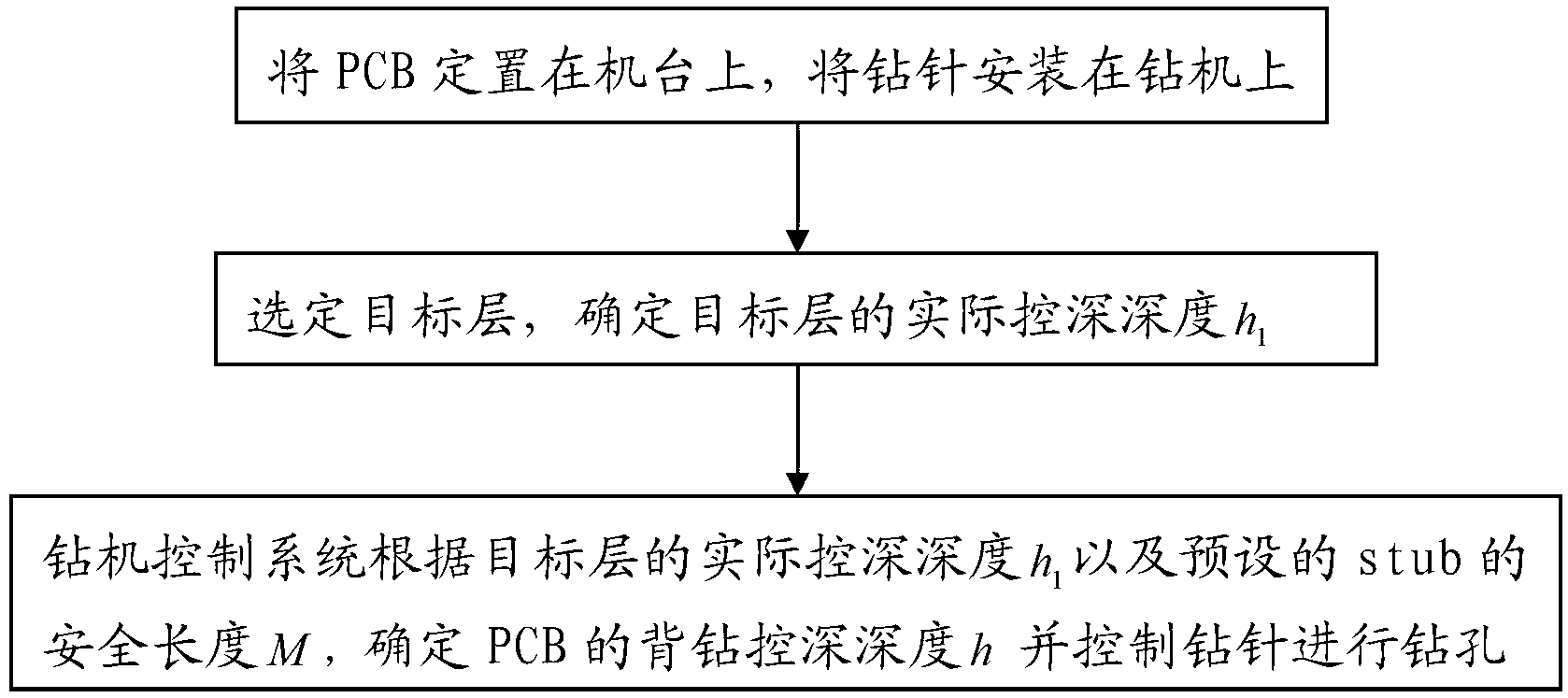PCB (printed circuit board) back drilling method
A back-drilling and drilling rig technology, applied in the field of communications, can solve the problems of poor transmission signal integrity, inability to meet the requirements of interlayer alignment, ringing, etc., to reduce the uniformity of plate thickness and eliminate adverse effects.
- Summary
- Abstract
- Description
- Claims
- Application Information
AI Technical Summary
Problems solved by technology
Method used
Image
Examples
Embodiment Construction
[0018] The embodiments of the present invention will be described in detail below in conjunction with the drawings:
[0019] Such as figure 1 , figure 2 As shown, a PCB back drilling method includes the following steps:
[0020] Set PCB2 on machine 4 and install the drill pin on the drill; make sure machine 4 is the reference plane, the normal line of this plane is upward is the positive direction of Z axis, and the coordinate value of machine Z axis is 0. A conductive cover plate 1 is fixed to the drill face. The conductive cover plate 1 is an aluminum sheet. The conductive cover plate 1 is fixed to the PCB back drill face by masking glue. An aluminum sheet with good conductivity is selected as the conductive cover The conductive cover plate is fixed on the bottom drill surface of the PCB back drill through masking glue to prevent the conductive cover plate from shifting and affect the accuracy of the measurement data;
[0021] Select the target layer and determine the actual co...
PUM
 Login to View More
Login to View More Abstract
Description
Claims
Application Information
 Login to View More
Login to View More - R&D
- Intellectual Property
- Life Sciences
- Materials
- Tech Scout
- Unparalleled Data Quality
- Higher Quality Content
- 60% Fewer Hallucinations
Browse by: Latest US Patents, China's latest patents, Technical Efficacy Thesaurus, Application Domain, Technology Topic, Popular Technical Reports.
© 2025 PatSnap. All rights reserved.Legal|Privacy policy|Modern Slavery Act Transparency Statement|Sitemap|About US| Contact US: help@patsnap.com


